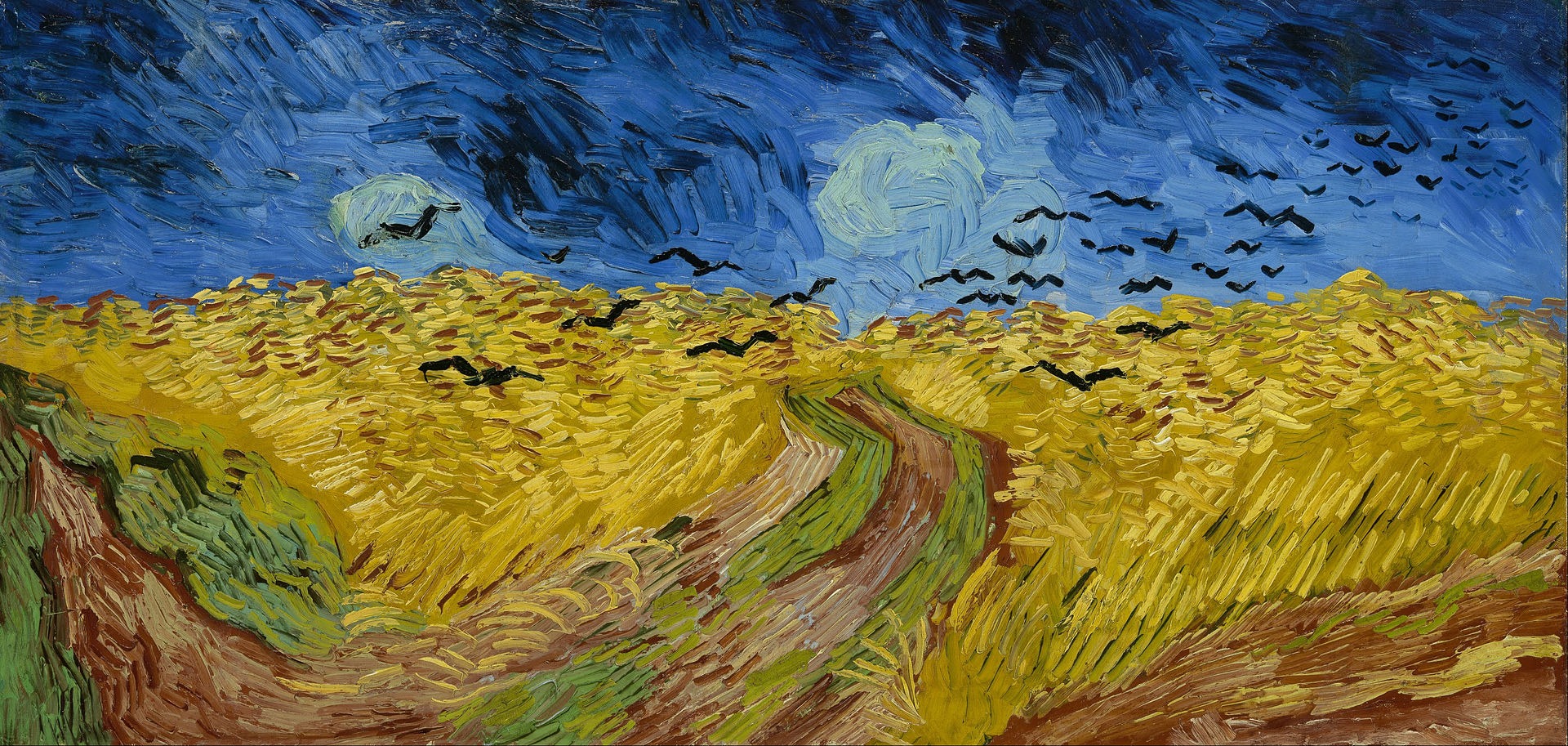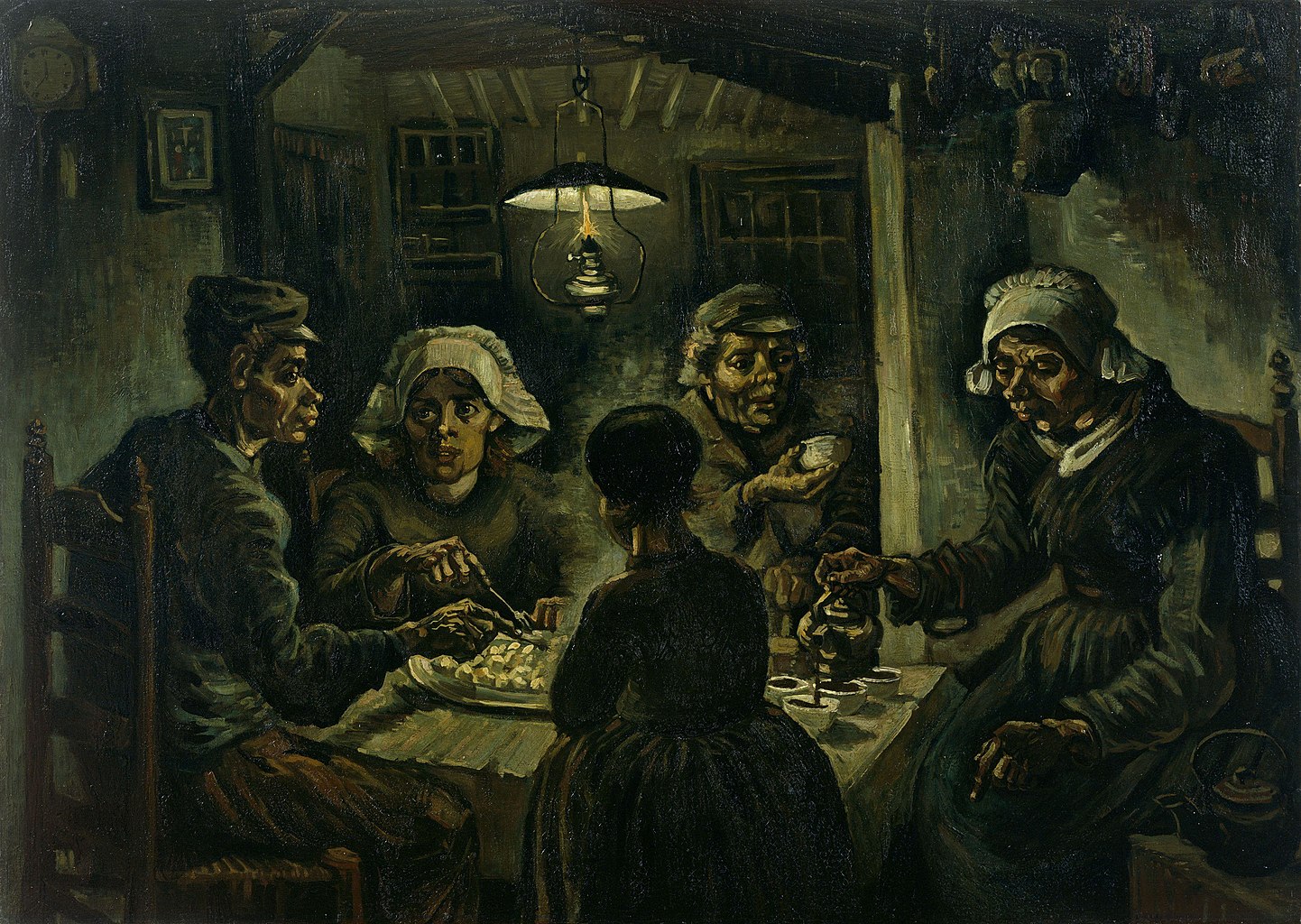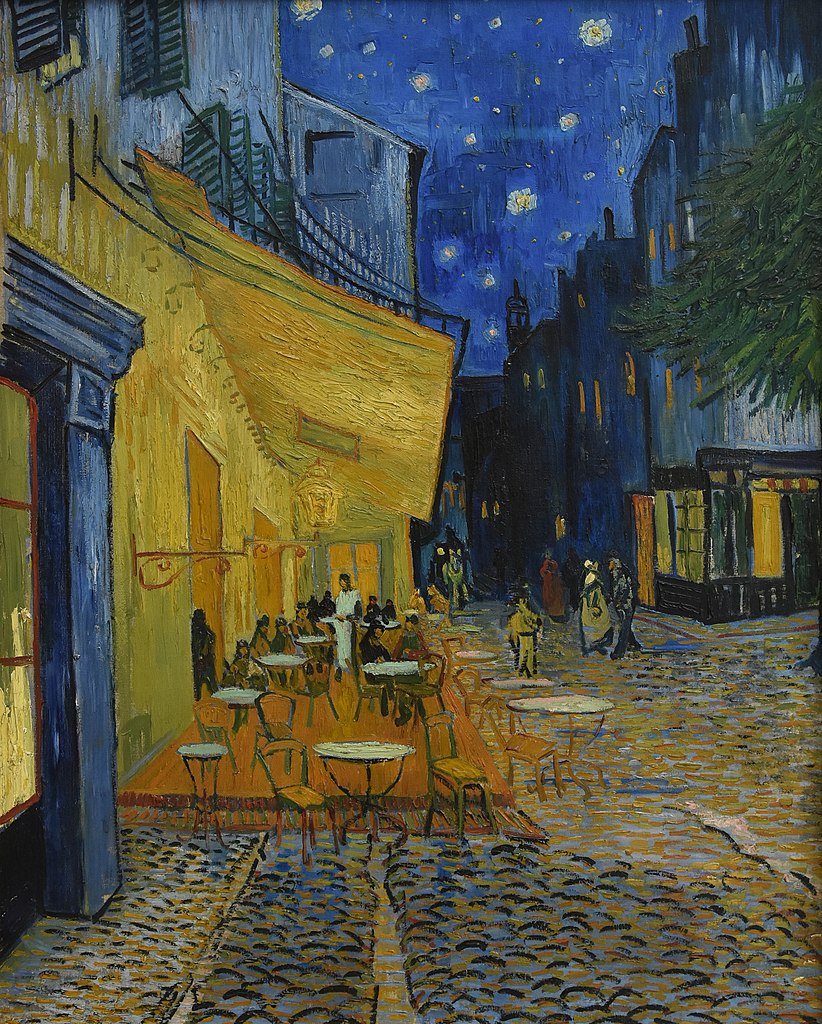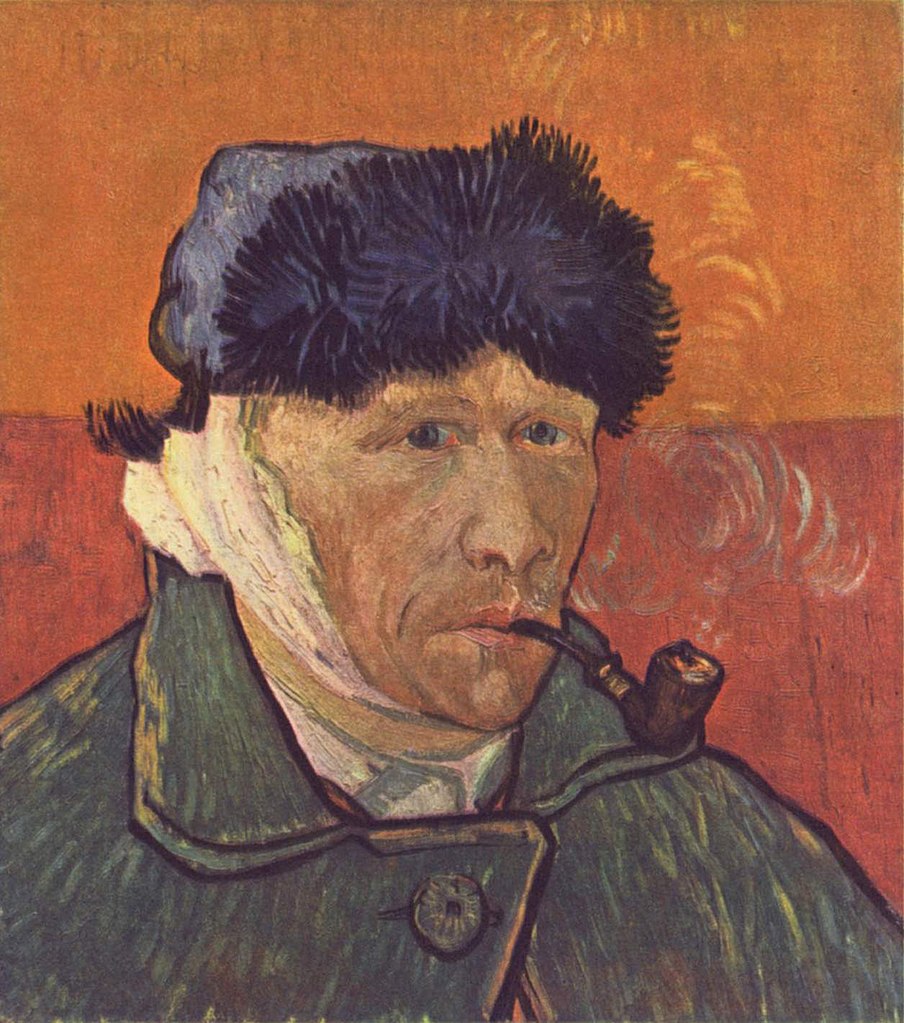Vincent Van Gogh was a Dutch Post-Impressionist painter. He is one of the most influential figures in Western Art history. He created more than 2,000 artworks, including 900 paintings and 1,100 sketches and drawings. Most of them were produced during the last two years of his life. Van Gogh had a massive influence during the eras of Expressionism, Post-Impressionism, Early Abstraction, and Fauvism. Let’s learn more about the life and art of Vincent Van Gogh, the greatest painter this world ever witnessed.
1. Early Life of Vincent Van Gogh
Van Gogh was born in Groot-Zundert, the Brabant region of Southern Netherlands, on 30 March 1853. He was the eldest of six children of a Protestant pastor. He was a quiet soul and spent most of his time wandering the countryside and observing nature.
How Art Entered into Van Gogh’s Life
At 16, he started working at The Hague branch of the art dealers Goupil and Co. He worked for Goupil in London from 1873 to 1875 and in Paris from May 1875 until April 1876. Van Gogh got affiliated with art and observing it daily aroused his artistic sensibility.
He formed a taste for Frans Hals, Rembrandt, and other Dutch masters. Although, his preference was two renowned French painters, Camille Corot, and Jean-François Millet. Van Gogh disliked art dealing. Additionally, when a London girl rejected him in 1874, his approach to life darkened. Resultantly, he opposed any type of human emotion and became increasingly solitary.
Van Gogh’s Jobs Before Becoming a Full-time Painter
Van Gogh worked as a lay preacher and language teacher in England. In 1877, he worked for a bookseller in Dordrecht, Netherlands. Van Gogh always wished to serve humanity, and that’s why he entered the ministry and registered for theology. However, he gave up on the project in 1878 and went for short-term training as an evangelist in Brussels.
Gogh had a conflict with authority when he disputed the traditional doctrinal approach. After failing to get an appointment after three months, Van Gogh left to do missionary work among the poverty-stricken population of the Borinage, a coal-mining region in South Western Belgium. There, in the winter of 1879-80, he experienced the first spiritual crisis of his life.
Being an empath, Van Gogh gave away all his worldly goods to the poor and was asked to leave the church for a too-literal interpretation of the Christian teaching. Gogh became penniless, that too with shaken faith. He sank into despair and told one of his acquaintances,
“They think I’m a madman because I wanted to be a true Christian. They turned me out like a dog, saying that I was causing a scandal.”
2. The Start of Van Gogh’s Artistic Career, 1880 – 1890
After leaving the church, Van Gogh moved to his father’s parsonage at Etten and began to draw seriously. In 1880, he discovered that he wanted to be an artist. He decided to bring consolation to humanity through art and explained to his brother Theo,
“I want to give the wretched a message when I sign [my paintings] ‘Vincent,’ it is as one of them.”
The realization of his artistic and creative powers also helped Gogh restore his self-confidence.
Gogh Decided to Learn The Intricacies of Art
In 1881, after facing some difficulties in self-training, Gogh decided to seek the guidance of experienced artists and moved to The Hague to work with a Dutch landscape painter, Anton Mauve. He visited many museums, met talented artists, extended his technical knowledge, and started experimenting with oil paint in the summer of 1882.
Always fond of being alone with nature, Van Gogh went to Drenthe, an isolated part of the Northern Netherlands. There, he spent three months and met Mauve and many other Dutch artists.
Meanwhile, if you’re a science lover and want to know more about famous scientists, read our article about another capable man of history: Albert Einstein.
Three Subjects of Van Gogh’s Art
During most of 1884 and 1885, Van Gogh remained in his village, Nuenen, and grew his art – making it bolder. He painted three types of subjects – landscape, still life, and figure and all three referenced the daily life of peasants, their hardships, and the countryside they cultivated.
A novel about the coal-mining region of France, Émile Zola’s Germinal (1885), greatly impressed Van Gogh. Sociological criticism of the movie is implicit in many of Van Gogh’s pictures from this period, including The Potato Eaters and Weavers. However, he again ended up feeling isolated in Nuenen.
3. Van Gogh’s Painting Style and Technique
Between the Spring of 1886 and February 1888, Gogh’s art underwent dynamic changes in Paris, which led to the creation of his idiom and style of brushwork. His palette became colorful, vision got broadened, and tonalities got tighter. All of these changes were seen in his first paintings of Montmartre.
By 1887, he started painting in pure colors and used broken brushwork. By the beginning of 1888, the Post-Impressionist style of Gogh became more clear, resulting in masterpieces such as Self-Portrait in Front of the Easel and Portrait of Père Tanguy as well as in some landscapes of the Parisian suburbs.
Van Gogh Used Pigments in His Paintings
Vincent Van Gogh used unique materials and methods to create art. He used to employ pigments in his work, a new trend in the art market at that time. He strove to accomplish brilliance in his color strokes. Because there were no chemicals at that time and pigments used to fade away quickly, Van Gogh used to apply more concentrated and brighter colors than he intended for the final result.
He also experimented with paint applications to create a uniquely thick impasto stroke of impressionists. This specific technique drove his Impressionism use into Post-Impressionism
When Van Gogh used to make a painting the first step would be to decide upon the support he will be working on.
The Use of Panel in Van Gogh’s Paintings
In his letters to Theo, he explained how he made use of the panel. He was talking about the boards used by artists, made out of material like cardboard, and the canvas arranged at the top and then his adaptation to the canvas. He specifically used these canvases because of their weaves which he further prepared and stretched himself.
Have a look at our top-notch collection of formidable quotes!
Top Three Paintings of Vincent Van Gogh
Throughout his life, Van Gogh wanted to portray the life of the poor, through his art. He saw beauty in the mundane. However, he didn’t become much popular in his life because people were attracted to the happy and beautiful themes, not the sad and real ones. He said,
“I see drawings and pictures in the poorest of huts and the dirtiest of corners”.
Although it’s impossible to rank his artworks, let’s take a look at the top three paintings of Vincent Van Gogh.
The Potato Eaters, 1885
The Potato Eaters portrays a village peasant family in their traditional setting and having a meal. Van Gogh meticulously planned this painting and aimed to exhibit it at the Paris Salon. However, the Salon rejected the painting and it wasn’t recognized during the life of Van Gogh. Today, it is considered one of his most regarded masterpieces and is exhibited at the Amsterdam Van Gogh Museum.
Sunflowers, 1888
Sunflowers is the title of two series of still life paintings. Van Gogh painted the first series in Paris in 1887 and the second in Arles in 1888. When his fellow impressionist, Paul Gauguin was about to join him in Arles, he painted the second series as a welcome gift for him.
He intended to decorate Gauguin’s room with these paintings. Both of them spent weeks painting together in Arles. Van Gogh used thick paint and beautiful vivid colors to add dimension and texture.
Sunflower paintings are on view at the following art museums around the world.
- The National Gallery, London
- Van Gogh Museum Amsterdam
- Kroller Museum, The Netherlands
- Metropolitan Museum of Art, New York
- Neue Pinakothek, Munich
Cafe Terrace at Night, 1888
Van Gogh made Cafe Terrace at Night in Arles. The cafe depicted in the painting still exists and is now named the Cafe Van Gogh. He painted this artwork in the evening hours and used color and brushwork to add extra emotions of excitement and pleasure. It is hanging on the walls of the Kröller-Muller Museum in the Netherlands.
Read more about the greatest philosopher, Confucius.
Van Gogh’s Struggle with Mental Health
Van Gogh always struggled with mental health. After cutting his left ear, he decided to get admitted into the asylum Saint-Paul-de Mausole near Saint-Rémy-de-Provence. He stayed there from May 1889 to May 1890. However, he did not let these fluctuating situations get to his art and produced almost 130 paintings, including the most famous ones, such as The Irises, Starry Night, and Wheat Field with Cypresses, in the asylum.
4. Bidding Farewell to the Father of Expressionism
Vincent Van Gogh breathed his last on July 27, 1890. He did not witness his art flourish during his lifetime, and most of his artworks became successful after his demise. Nonetheless, Van Gogh was an artist ahead of his time, and although he was never understood, he kept making artworks, even during the most challenging period of his life. His unique painting style and technique inspired millions to become an artist and is continuing to do so…







